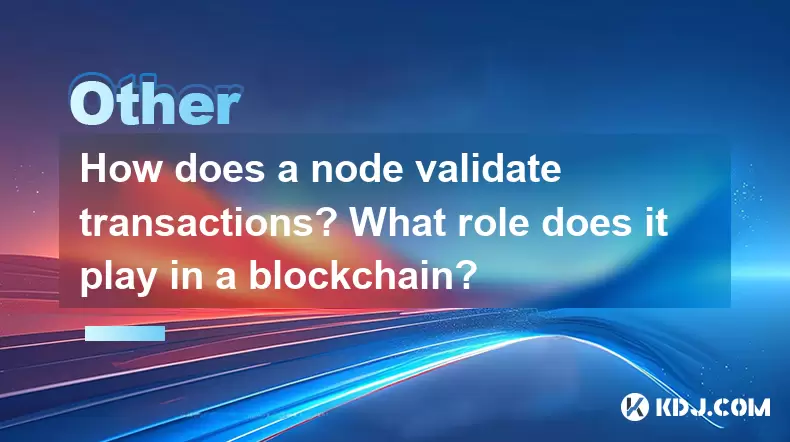-
 Bitcoin
Bitcoin $114800
-3.31% -
 Ethereum
Ethereum $3641
-5.84% -
 XRP
XRP $2.948
-6.36% -
 Tether USDt
Tether USDt $0.9998
-0.03% -
 BNB
BNB $772.4
-3.97% -
 Solana
Solana $169.1
-6.68% -
 USDC
USDC $0.9999
-0.01% -
 Dogecoin
Dogecoin $0.2056
-8.09% -
 TRON
TRON $0.3247
-0.18% -
 Cardano
Cardano $0.7239
-7.43% -
 Hyperliquid
Hyperliquid $39.71
-8.60% -
 Stellar
Stellar $0.3912
-7.84% -
 Sui
Sui $3.510
-10.17% -
 Chainlink
Chainlink $16.59
-8.03% -
 Bitcoin Cash
Bitcoin Cash $560.5
-3.65% -
 Hedera
Hedera $0.2464
-10.08% -
 Avalanche
Avalanche $22.03
-7.87% -
 Ethena USDe
Ethena USDe $1.001
-0.02% -
 UNUS SED LEO
UNUS SED LEO $8.947
0.21% -
 Toncoin
Toncoin $3.389
-2.58% -
 Litecoin
Litecoin $104.9
-5.23% -
 Shiba Inu
Shiba Inu $0.00001220
-6.67% -
 Polkadot
Polkadot $3.652
-6.10% -
 Uniswap
Uniswap $9.213
-9.05% -
 Monero
Monero $307.2
-2.93% -
 Dai
Dai $0.9998
-0.02% -
 Bitget Token
Bitget Token $4.367
-2.89% -
 Cronos
Cronos $0.1374
-6.80% -
 Pepe
Pepe $0.00001056
-8.65% -
 Aave
Aave $257.3
-7.31%
How does a node validate transactions? What role does it play in a blockchain?
Nodes are crucial for blockchain integrity, validating transactions and ensuring decentralization, but more nodes can slow transaction speeds.
May 15, 2025 at 08:57 pm

Understanding the Role of a Node in a Blockchain
In the world of cryptocurrencies, a node plays a critical role in maintaining the integrity and functionality of a blockchain. A node is essentially a computer connected to the blockchain network that performs various tasks, including validating transactions and storing data. These nodes are vital because they help ensure that the blockchain remains decentralized and secure. Without nodes, a blockchain would not be able to function effectively, as they are the backbone of the network's operations.
The Process of Transaction Validation
When a user initiates a transaction on a blockchain, it does not get immediately added to the ledger. Instead, it enters a pool of unconfirmed transactions known as the mempool. Here, the transaction awaits validation by nodes on the network. The validation process involves several steps, which nodes carry out to ensure that the transaction is legitimate and follows the rules of the blockchain.
Steps Involved in Validating Transactions
Verification of Digital Signatures: The first step in transaction validation is to check the digital signature attached to the transaction. Nodes verify that the signature matches the public key of the sender, ensuring that the transaction has not been tampered with and that it indeed comes from the person claiming to send the funds.
Checking for Double Spending: One of the primary concerns in a blockchain is the prevention of double spending, where a user attempts to spend the same cryptocurrency more than once. Nodes check the entire blockchain history to ensure that the coins being spent have not been spent before.
Validation of Transaction Inputs and Outputs: Nodes also validate the inputs and outputs of the transaction. This involves checking that the sender has the necessary funds to complete the transaction and that the transaction adheres to the rules set by the blockchain protocol.
Consensus Mechanism: After individual nodes validate transactions, they must reach a consensus with other nodes on the network. This is achieved through various consensus mechanisms such as Proof of Work (PoW) or Proof of Stake (PoS), depending on the blockchain's design. Once a consensus is reached, the transaction is considered valid and can be added to a block.
Types of Nodes and Their Functions
Not all nodes perform the same functions within a blockchain network. There are several types of nodes, each with specific roles:
Full Nodes: These nodes store a complete copy of the blockchain and validate all transactions and blocks. Full nodes play a crucial role in maintaining the integrity of the blockchain by ensuring that all rules are followed and that no invalid transactions are added.
Light Nodes: Also known as SPV (Simplified Payment Verification) nodes, these nodes do not store the entire blockchain. Instead, they rely on full nodes to provide them with necessary data. Light nodes are used by users who want to interact with the blockchain without the need for extensive storage and computational power.
Mining Nodes: In blockchains that use PoW, mining nodes are responsible for solving complex mathematical puzzles to add new blocks to the blockchain. These nodes not only validate transactions but also secure the network by adding new blocks.
Validator Nodes: In PoS and other similar consensus mechanisms, validator nodes are responsible for creating new blocks. These nodes are chosen based on the amount of cryptocurrency they hold and are willing to 'stake' as collateral.
The Importance of Nodes in Maintaining Decentralization
One of the key benefits of blockchain technology is its decentralized nature, and nodes play a significant role in achieving this. By having numerous nodes spread across the globe, no single entity can control the entire network. This decentralization enhances the security and resilience of the blockchain, as it becomes much harder for malicious actors to compromise the system.
How Nodes Contribute to Network Security
Nodes contribute to the security of a blockchain in several ways. Firstly, full nodes act as watchdogs, constantly monitoring the network for any invalid transactions or blocks. If a node detects something amiss, it will reject the invalid data and alert other nodes on the network. Secondly, the consensus mechanism employed by nodes ensures that only valid transactions are added to the blockchain. This collective validation process makes it extremely difficult for fraudulent activities to succeed.
The Impact of Nodes on Transaction Speed and Scalability
While nodes are essential for the security and integrity of a blockchain, they can also impact transaction speed and scalability. The more nodes a network has, the longer it might take for transactions to be validated and added to the blockchain. This is because each node needs to validate the transaction independently. However, this trade-off is often seen as worthwhile, as the increased security and decentralization provided by a larger number of nodes outweigh the potential delays.
Frequently Asked Questions
Q: Can anyone run a node on a blockchain network?
A: Yes, anyone with the necessary hardware and internet connection can run a node. However, running a full node requires significant storage and bandwidth, as it needs to store and process the entire blockchain. Light nodes, on the other hand, are more accessible to run with less demanding hardware requirements.
Q: How do nodes get rewarded for their services?
A: In many blockchain networks, nodes, particularly mining and validator nodes, are rewarded for their services. Mining nodes receive newly minted cryptocurrency as a reward for adding new blocks to the blockchain. Validator nodes in PoS systems are often rewarded with transaction fees and sometimes additional cryptocurrency for their role in maintaining the network.
Q: What happens if a node goes offline?
A: If a single node goes offline, it does not significantly impact the overall functionality of the blockchain, as there are typically many other nodes operating on the network. However, if a large number of nodes go offline simultaneously, it could potentially disrupt the network's operations and slow down transaction processing.
Q: Are there any risks associated with running a node?
A: Running a node can come with certain risks, particularly for full nodes that store the entire blockchain. These risks include potential security threats, such as hacking attempts, and the cost of maintaining the necessary hardware and internet connection. Additionally, in some jurisdictions, running a node might attract regulatory scrutiny, depending on the nature of the blockchain and the activities it supports.
Disclaimer:info@kdj.com
The information provided is not trading advice. kdj.com does not assume any responsibility for any investments made based on the information provided in this article. Cryptocurrencies are highly volatile and it is highly recommended that you invest with caution after thorough research!
If you believe that the content used on this website infringes your copyright, please contact us immediately (info@kdj.com) and we will delete it promptly.
- Bitcoin, Ethereum, and Investor Behavior: A New York Minute on Crypto Trends
- 2025-08-01 15:10:12
- Tether's Q2 Triumph: USDT Supply Soars Amidst Profit Surge!
- 2025-08-01 15:10:12
- Ethereum ETF Holdings: A Corporate Treasury Revolution?
- 2025-08-01 15:30:12
- Ethereum's Wild Ride: Funding Rates, Price Drops, and Retail to the Rescue!
- 2025-08-01 15:30:12
- Ethereum Under Pressure: Crypto Market Drop Explained
- 2025-08-01 15:35:11
- Ethereum ETF Mania: Inflows Surge, Market Rises, What's Next?
- 2025-08-01 15:35:11
Related knowledge

How to start a business using blockchain?
Jul 28,2025 at 12:36am
Understanding the Basics of Blockchain TechnologyBefore diving into the process of starting a business using blockchain, it's crucial to understand wh...

What is a token on the blockchain?
Jul 21,2025 at 07:00am
Understanding the Concept of a TokenIn the realm of blockchain technology, a token is a digital representation of an asset or utility that exists on a...

Can blockchain be used for identity verification?
Jul 18,2025 at 02:14pm
Understanding Identity Verification in the Digital AgeIn the modern digital landscape, identity verification has become a critical component for ensur...

What is a consensus mechanism in blockchain?
Jul 21,2025 at 03:01am
Understanding the Basics of Consensus MechanismsA consensus mechanism is a critical component of any blockchain network. It refers to the process by w...

How to explain blockchain to someone with no tech background?
Jul 18,2025 at 11:08pm
Understanding the Basics of BlockchainTo explain blockchain to someone with no tech background, it's essential to start with simple analogies and avoi...

Who invented blockchain technology?
Jul 23,2025 at 01:28am
Origins of Blockchain TechnologyBlockchain technology did not emerge from a single inventor or institution. Instead, it evolved through a series of ac...

How to start a business using blockchain?
Jul 28,2025 at 12:36am
Understanding the Basics of Blockchain TechnologyBefore diving into the process of starting a business using blockchain, it's crucial to understand wh...

What is a token on the blockchain?
Jul 21,2025 at 07:00am
Understanding the Concept of a TokenIn the realm of blockchain technology, a token is a digital representation of an asset or utility that exists on a...

Can blockchain be used for identity verification?
Jul 18,2025 at 02:14pm
Understanding Identity Verification in the Digital AgeIn the modern digital landscape, identity verification has become a critical component for ensur...

What is a consensus mechanism in blockchain?
Jul 21,2025 at 03:01am
Understanding the Basics of Consensus MechanismsA consensus mechanism is a critical component of any blockchain network. It refers to the process by w...

How to explain blockchain to someone with no tech background?
Jul 18,2025 at 11:08pm
Understanding the Basics of BlockchainTo explain blockchain to someone with no tech background, it's essential to start with simple analogies and avoi...

Who invented blockchain technology?
Jul 23,2025 at 01:28am
Origins of Blockchain TechnologyBlockchain technology did not emerge from a single inventor or institution. Instead, it evolved through a series of ac...
See all articles

























































































